The Ins and Outs of H-1B Visas - PODCAST TRANSCRIPT
April 5, 2024 at 12:00 p.m.Editor's note: The following is the transcript of a live interview with Mary Kate Fernandez of Adams and Reese. You can read the interview below or listen to the podcast!
Intro: Welcome to Roofing Road Trips, the podcast that takes you on a thrilling journey across the world of roofing. From fascinating interviews with roofing experts to on-the-road adventures, we'll uncover the stories, innovations and challenges that shape the rooftops over our heads. So fasten your seat belts and join us as we embark on this exciting Roofing Road Trip.
Heidi J. Ellsworth: Hello and welcome to another Roofing Road Trips from Roofer's Coffee Shop. My name is Heidi Ellsworth, and today we are talking about immigration. One of the most important things in our industry right now is this battle for good legal immigration and how do you do it? So, we went to the experts of Adams and Reese, and we're talking with Mary Kate Fernandez, who can tell us all about H-I-B Visas and everything else around immigration. Mary Kate, welcome to the show.
Mary Fernandez: Thank you, Heidi. Thanks so much for having me. I'm happy to be here.
Heidi J. Ellsworth: It's great. This is a tough topic.
Mary Fernandez: It is, and it's really heating up, and unfortunately, I think a lot of the focus is on the border when it really needs to be on what we're talking about today, like legalized employment in immigration, that's what business owners are interested in and that's what a lot of the country is interested in. But the conversation is so skewed at this point, and people really need to be educated about how to be able to use our laws to effectively hire foreign talent.
Heidi J. Ellsworth: I love it. And you're right, we need a lot more conversation around this. So before we dive into that, why don't you go ahead and introduce yourself. Let us know about what you do at Adams and Reese, and maybe a little bit about Adams and Reese.
Mary Fernandez: Yeah, so Adams and Reese is a regional firm, we like to say. So we have about 20 offices. Don't quote me on that, because it shifts. Sometimes they add one, sometimes they take one away. So we are a multi-practice firm. We basically can cover any topic at this point. We just added an AI group last week. So I am tethered to the New Orleans office, but as we just discussed before the podcast started, I'm physically located in Kansas City, fully remote.
So immigration is a federal area of practice, so it's not tied to a state bar. You can practice that from anywhere in any state because it's federal law. So, I'm remote in Kansas City, have clients all over the country, all over the world and I practice business immigration. So that means basically employment immigration, our clients are startups, sole practitioners, sole proprietorships to large multinational corporations. And I basically assist them with identifying foreign talent that they want to hire and retain and helping them do that legally by obtaining employment visas anywhere from H-2Bs, H-1Bs, all the way up to E-1Bs, which are for people who are one of a kind in the world and can basically sponsor themselves to be able to come and employ themselves in the US.
Heidi J. Ellsworth: Wow. Wow. Well, okay, I think there's a lot of confusion out there, just even on understanding all of the terminology. So let's start with what is an H-1B visa, and what is the program around it?
Mary Fernandez: So, the H-1B people are really talking about this right now because it's, I guess you could say, in season. This is the time of the year that the H-1B is really getting a lot of buzz because there is an annual lottery. So there's an 85,000 annual cap on the number of visas that the government will hand out per year for an H-1B. So obviously there's way more people around the world that want these visas than 85,000 people. So they run, and they being USCIS, runs an annual lottery, usually opening on March 1st this year. They opened it a few days later where an employer or an individual registrant can go and register themselves in the lottery. They hope to get a lottery number. It's announced towards the end of the month if they get a lottery number, they can proceed with the H-1B visa petition.
So the H-1B itself is an employment visa that can be obtained for up to six years. It's an employer-sponsored visa. So you have to basically have an identified job position with an employer. The employer's going to sponsor the individual registrant. And then an important thing about this visa that I think people don't always understand is that it's a specialty occupation visa. So this is a higher level specialty position visa. So think like project engineers, people with bachelor's degrees or very well documented experience that the government will consider to match up to a bachelor's degree, so five years or more in a specialty occupation. So doctors, nurses, engineers, STEM degrees. That's really the basis of this, teachers, a definable specialty occupation.
Heidi J. Ellsworth: And so, we're not really talking about labor in the field for construction, we're talking about project management and with a lot of experience and degrees around that. So, when you are looking at construction overall, and we're thinking about how this can work, this really is going to help manufacturers, distributors and possibly very larger contractors or roofing companies that are looking for specialty talent. Talk to us a little bit about how you see the H-1Bs really fitting into construction and Roofers Coffee Shop, so specifically around roofing.
Mary Fernandez: Yeah, so definitely those project manager positions and anything that's going to require an engineer. So it's larger companies that have multi-level management, and then people that are going to have a degree that fits into the requirements of that role. A lot of where we see this in use is a project engineer position or a project manager.
Heidi J. Ellsworth: I think also we have a number of manufacturers who listen to our podcasts in the roofing industry. They may have more research in those types of positions where they're really looking globally. So when you're talking about that H-1B program opportunity for employers like manufacturers specifically in research, what's the opportunity and really how does it help them?
Mary Fernandez: Well, so the whole visa scheme really, if you can show if there's especially something in research where you're testing and you've done any kind of academic research before this, the visa scheme really rewards those types of backgrounds and positions. So if you can identify, if these companies can conduct recruitment at an academic level and form relationships with universities and identify that talent early on, then it's just an easier path for those individuals to be able to have employment authorization for a longer term.
Where we run into issues is where we have clients who say, "Okay, we have this guy who's been with us for 20 years. He's amazing. He's so skilled, but his education background is really minimal." And obviously the employer understands how important that individual is to the business. But the visa scheme is really skewed towards rewarding degrees. So going back to a manufacturer or research position, something akin of that nature, if they can locate candidates during the university level and say, "Okay, you have a STEM degree," then that basically even before the H-1B Visa, that person's going to be able to work for three years on what's called OPT and then an additional, they get one year of OPT based on a degree and then if it's a STEM degree, they'll get an additional two years of employment authorization, which is called STEM OPT.
So right there, upon graduation, they're going to have three years of employment authorization. And for some people, that's halfway to management depending on what industry you're in. So that's a really important thing I think for employers, to keep an eye out for. If you're in a position that is going to require a STEM degree, you're very likely going to be able to employ this person for up to 10 years just off the bat, because you'll get those three years of STEM OPT and then you can apply for the H-1B visa lottery while they're on OPT and hope that you get those multiple chances in the lottery.
And then once they get the H-1B number, they'll get up to six years on the H-1B. And then the next step in this process that we start educating people really early on is that while you're having all these years of employment authorization, you're beginning the green card process. So if you know this as a person you want to employ long term, you want them to be with your company as long as possible, you initiate that green card process as early on as possible. So, you do the OPT, H-1B and then in the background always have the green card process working because it takes years. It could take up to three to four years minimum. So you have to have all of these irons in the fire to keep this talent with your company.
Heidi J. Ellsworth: So, it's so interesting because I was just at Clemson and Karen Edwards and I were presenting on sales and marketing to the roofing class that is now there. Clemson now has three roofing classes. And there were a number of young people who were international and who are graduating with either, a lot of them have bachelors, master's, PhDs, even that are looking to work in the industry and some of them are 100% looking at being a project manager to start out with. So stepping back a little bit for some larger roofing companies, this could be a great opportunity to hire someone right out of construction management school and be able to have those three years and then start working on the HB-1 and green card, as you said. This is a little bit, but I'm just curious, what kind of dollars are we talking about in order for someone to help bring a student in and go through this whole process? Because it sounds lengthy.
Mary Fernandez: It is lengthy in time, if the applicant is decently informed, which a lot of these people are, and that's why they're setting themselves up early on as students. They know, they have friends, they have networks, they know what is ahead of them, so they're fitting themselves into these boxes of the visa scheme already. So that makes it a lot easier because you're just going to have a more simple application. If the person literally checks all of the boxes on the visa petition, then it's going to be pretty cookie cutter. Obviously individual people are going to have individual complications to their case, but it depends. So that's one thing that'll keep it lower cost and more simple if the person just has their qualifications ready to go. Each one has their own fees. OPT is really straightforward, really simple. It's really just the Department of State Visa Application, just like when you go to another country and you fill that out. That one is pretty straightforward and simple under $2,000 if you wanted to expedite it, you can pay an additional fee. So that one's pretty simple.
The H-1B, obviously the lottery only costs $10 to enter, so that is very low risk to just determine if you're going to get a lottery number. If I had to give a ballpark, it's difficult, but if I had to give a ballpark for just an H-1B petition, I would say low end $5,000, including attorney's fees, high end, maybe 10 to 15 depending on the complications.
And I'll tell my clients at the outset, "If you have an employee who is, let's just say extra to put it simply, if you have someone..." I have some clients who just give my number out and then their employees will be calling at 7:00, 8:00 at night and want to talk about every aspect of every part of their petition, their brother's petition, their mom, all this stuff and then that can add it up. But if they have their documents ready to go, keep it straightforward, you can really keep the cost down. It is an additional cost obviously, than it would be for an American employee, but a lot of employers feel like these people are really valuable and they go the extra mile because they really want to work in the US. So they're really talented. They have different skills that you may not be able to get in an American job candidate and they're worth the extra expense.
Heidi J. Ellsworth: Wow, this is so interesting, Mary Kate. This is just amazing. So let's talk a little bit about some of the key elements for when they're applying for visas. So if they have found this student or found this person who's just awesome, what are the elements for applying the steps?
Mary Fernandez: So, number one, I would say identifying the candidate, make sure that they're going to qualify for this role. Because a lot of my consultation calls that we'll have, it's like what I referred to earlier where someone's like, "This is a super valuable employee," et cetera, et cetera. Just make sure baseline that you understand the requirements for just qualifying for the visa and then locating someone who is very likely going to match those. So that's step one. So if we're talking in the context of H-1Bs mostly a bachelor's degree or a master's degree. So if you've identified a candidate that has a degree, you're most likely going to be fine moving forward with that petition. Obviously, something with this one to keep in mind is the cap. So there's 85,000 of these visas per year. 20,000 of them are reserved for people with a master's degree. So that just gives people with a master's degree a little bit of a leg up because they have that further qualification, at least in the lottery process.
Third is the lottery. So you have to keep these timing constraints in mind. So this opens in March. You basically have, the dates fluctuate from year to year, but it's generally March 1st to March 31st when you're going to be participating in the lottery. And then you find out at the end of the month if you have the lottery number and then you have 90 days to file your petition if you get a lottery number. Sometimes they run a second lottery if they don't have enough valid petitions to meet the cap. So they did that two years ago. They did not do it last year. We don't know yet if they'll do it this year. They changed the process a little bit this year to deal with some fraud that's been a real problem over the last four or five years.
So we'll see if that may change things, and that may allow them to run a second lottery because there's going to be fewer applications in the pool. But that's definitely something to keep in mind. If you find an attorney and you come to them and it's July and you want to hire this person, you're going to have to wait very likely until the next lottery the following year. So qualifications, cap, lottery. So that's the first three kind of prereqs that you have to look at in going into this process. Once they get a lottery number and they're qualified and you fill out your petition, another thing that you're going to have to do before filing the petition is getting a determination from the Department of Labor confirming that you're paying this person the prevailing wage.
So you have to pay at least more or equal to what you would pay an American worker, and you have to confirm that with the government before filing this petition. That doesn't take very long, but it's just that additional step to make sure that you're not undermining American workers by hiring foreign workers. So that's pretty across the board for any type of visa petition that you do. They're going to want you to verify that you're not getting some kind of advantage by hiring a foreign worker.
Because the whole visa scheme too that I always tell clients, "Keep in mind that we're going through these additional steps because the government wants this to be difficult and they want you to verify that you're not undermining American labor by hiring foreign talent." So that really makes things difficult because it's supposed to. And then the final thing to keep in mind is that this is a temporary visa, so it can be obtained initially up to three years and then extended for an additional three years. So you just keep that in mind. This isn't something that like, "Okay, we've hired him, he's on an H-1B, ta-da, we're done." You have to always keep your next move in mind because that six-year clock starts running from the day of beginning the position.
Heidi J. Ellsworth: And this is going back, but I'm just really curious. So as a student coming out of a construction management university with either a bachelor's or a master's, they have three years through the OPT.
Mary Fernandez: Yes.
Heidi J. Ellsworth: If they get their HB-1 approved, if they are lucky enough to be the lottery and hit it the second year, do they still get to finish out their OPT before starting the HB-1 or does the HB-1 start or H-1B, sorry, I said that wrong, start immediately?
Mary Fernandez: It depends. You can set it up however you want to. And then if you have that unused OPT, you can go back after and use it.
Heidi J. Ellsworth: Oh, okay,
Mary Fernandez: So, you don't lose your OPT if you don't use it. So it accumulates in the one-year process. So it'll depend on which. And if it's in the lottery, then you have 90 days to apply. So, you're going to want to at least get on your H-1B, file your petition and begin within that 90-day period or you're going to lose your lottery number.
Heidi J. Ellsworth: Wow-
Mary Fernandez: But another really cool thing, sorry to cut you off.
Heidi J. Ellsworth: No, go ahead.
Mary Fernandez: If they get that lottery number and they do begin their H-1B, and then they go back to another status or maybe they're married and they can get on a dependent status of their spouse and not use their own H-1B status, they won't be subject to the numerical cap later on. So, say you use one year of your H-1B, but then your spouse also gets on H-1B, and you can get on a dependent H-4 using theirs and then when theirs runs out, you swap and you use your H-1B for five years after that, and the spouse can get on an H-4 for you. And they actually just allowed employment authorization for H-4 dependent. So that's a way that people can use it and just maximize the number of years of employment authorization.
Heidi J. Ellsworth: You really have to be an expert. You really need to go and talk to experts. There's just so many different-
Mary Fernandez: It's so complicated.
Heidi J. Ellsworth: Yeah. Wow.
Mary Fernandez: I've heard people say that all of this whole visa scheme began in the 1950s, and then in the eighties they were like, "We really need to revamp this. This is a mess." And then instead they just basically added more layers on top and it's just gotten more complicated ever since. So it's never been revamped and the revamp was just adding more complications.
Heidi J. Ellsworth: Yeah. Oh my gosh. So real quick, and then I have some other questions [inaudible 00:21:37], but I also wanted to say, you had said once you do, if you are lucky enough to get an H-1B, then you should be starting that green card process immediately. And the green card process, how long does that last once you can get a green card?
Mary Fernandez: Oh, you mean once you get the green card?
Heidi J. Ellsworth: Mm-hmm.
Mary Fernandez: So that's permanent.
Heidi J. Ellsworth: That's permanent. Okay.
Mary Fernandez: If you see non-immigrant visa, which is the H-1B, that means temporary. You are not immigrating here, you're temporarily here, whereas the green card is an immigrant visa. So green card is a blanket term for all of these different levels of visas that people have different qualifications for, but once you obtain one, it's an immigrant visa and you're here and it's up to 10 years and then renewable.
Heidi J. Ellsworth: Okay. So question, and maybe there isn't even a solution here, but besides the H-1B, are there any other programs that roofing contractors, smaller who maybe are looking for skilled labor in the field on the roof, are there any other programs that they should be aware of or looking at?
Mary Fernandez: So, the most likely one that smaller companies are going to be able to use and larger companies are going to be able to use for labor is the H-2B program. It's very difficult to qualify for in the construction context because it depends on how you craft your petition, but it's a seasonal visa, so that is something that people really have trouble with because if you don't make it clear through your petition that this is temporary and seasonal work, then you'll get a flat denial immediately. That's the most messed up thing in my opinion about the US visa scheme is that there's no labor or visa. It's just the H-2B, and that's a temporary seasonal visa. I think that would solve a lot of our issues, not to get into any of that, but if there was just a labor visa, we probably wouldn't be talking about half the things we're talking about.
Heidi J. Ellsworth: Exactly. And so if you're in a northern climate where you do shut down for three months out of the year, that may be something that you could look at possibly?
Mary Fernandez: That's perfect, and you'll have to have documentation of that through payroll records and your schedule for the year. But if you can show that and get your paper and it's heavily papered, so you have to have all of this documented. But if you can do that, then that's someone that would absolutely qualify for the H-2B program.
Heidi J. Ellsworth: And are they able to come back year after year or do you have to reapply every year?
Mary Fernandez: You have to reapply every year, but they can come back every year.
Heidi J. Ellsworth: Wow.
Mary Fernandez: But you have to show, this is our peak season, this is why. This is how many people we need, here's why. So you really have to craft that petition to fit into this box that it doesn't necessarily make sense fitting into.
Heidi J. Ellsworth: Yeah. You touched on it, and I know there are no answers to this with what's going on in Washington DC, but we are heading out to Roofing Day next week, and immigration is a big topic, but do you see any changes in the future, anything coming down the pipe that is maybe going to help with getting more labor, more talent, labor in the field for our roofing companies?
Mary Fernandez: As far as labor? Not really. There's always a murmur of a bill that I've seen over the last couple of years, but it usually dies early on in the process. But that's definitely, if you guys have voices there, that is something that legislators need to understand is a huge issue for businesses and no one is helping with it. They're so busy talking about the border rather than being like, "People can't find labor and they need help being able to obtain foreign workers to do it," so it's a big problem.
Heidi J. Ellsworth: Wow. Okay. Let's talk just a little bit about Adams and Reese and how you can help. It's pretty obvious after this conversation that they need to be talking to you and how... I know you identified this a little bit, but let's just recap. What's some of the homework contractors who are looking at higher level bachelors and graduate level, what's some of the homework they should be doing before they even pick up the phone? And then when should they pick up the phone and call you guys and what can you do to help at that point?
Mary Fernandez: I think once they've identified a foreign candidate, is probably the time to engage an attorney and say, "Okay, we're ready to begin the process. Here's our guy. What do we do?" As far as pre-work before that, I think identifying candidates. We don't necessarily help with recruitment unless it's within the green card process because it's a required legal part of the green card petition process. But I think getting in on the college level and advertising to those groups, because that's where you're going to get the most loyal and the most active candidates that are going to be ambitious and want to. They know the process. They know from the beginning, not all of them, but most of them have a general idea, "Okay, this is what I'm going to qualify for and these are the roles I'm going to go after because I know that I can get a visa based on this level of employment." So, I think doing that advertising and doing that recruitment and then once you have your candidate or candidates, then you come to Adams and Reese and say, "Okay, help me hire these people."
Heidi J. Ellsworth: I love it. Well, I have to tell you, after meeting the young people at Clemson who are looking at graduating, most of them with their master's and from a graduate level, they're pretty amazing, very talented. And so if you are a roofing contractor out there and you're looking for project management that's coming from a construction management school, this could be a great solution for you. And that is just one construction school out of thousands, maybe not thousands, but hundreds in the US. So, this is an opportunity for that upper higher-level role in your company that you're looking for and this is a great way to do it. Mary Kate, thank you so much for your time today. Wow, really interesting.
Mary Fernandez: Thank you. I enjoyed it.
Heidi J. Ellsworth: I love it. This is the kind of stuff that I'm always just so impressed and amazed, and sometimes a little disappointed that our government makes it so hard. But at the same time, I'm glad we have folks like you.
Mary Fernandez: Yep. We'll figure it out.
Heidi J. Ellsworth: Someday. We'll figure it out. So if you all are listening to this, please check out the directory for Adams and Reese. Also, check out the Roofing Day directory. We're going to be in DC next week for Roofing Day talking about these issues because NRCA is there advocating for us all the time. This is key to our future that we all have a voice. Again, Mary Kate, thank you so much for being here today.
Mary Fernandez: Thank you, Heidi. It was great meeting you.
Heidi J. Ellsworth: Great visiting with you. I look forward to talking about this more. For everyone out there, again, please check out the directory for Adams and Reese, see what you can find there. Also, check out the Roofing Alliance Construction Management Program where you can see the programs at Clemson and other construction schools across the country that can help you on this path. Finally, check out all of our podcasts under our RLW read, listen, watch navigation on rooferscoffeeshop.com. Look for Roofing Road Trips and on your favorite podcast channel. Be sure to subscribe and set those notifications so you don't miss a single episode. We'll be seeing you next time on Roofing Road Trips.
Outro: If you've enjoyed the ride, don't forget to hit that subscribe button and join us on every roofing adventure. Make sure to visit rooferscoffeeshop.com to learn more. Thanks for tuning in, and we'll catch you on the next Roofing Road Trip.



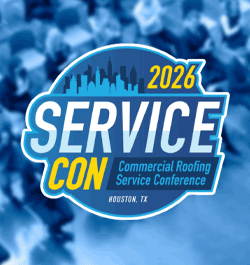









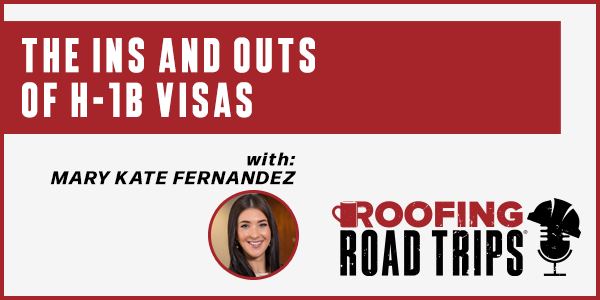
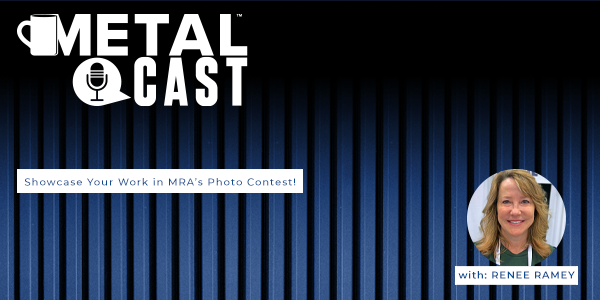
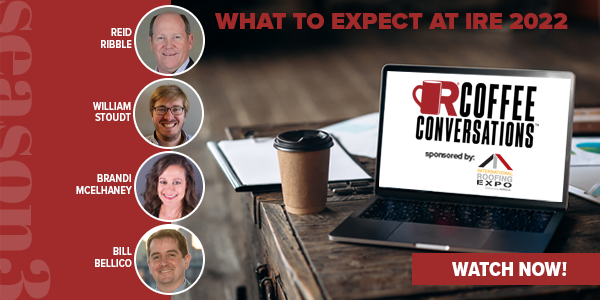
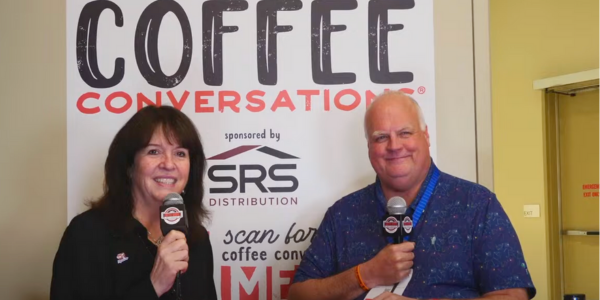





Comments
Leave a Reply
Have an account? Login to leave a comment!
Sign In